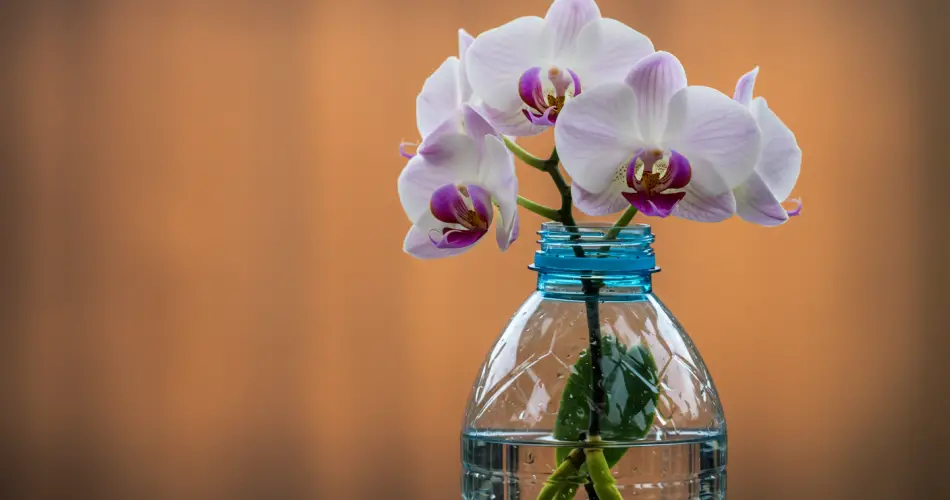Orchids are some of the most beautiful and versatile plants to grow, whether indoors or in a garden. With over 25,000 species, they come in a dazzling array of shapes, sizes, and colors. One of the most popular varieties is the Phalaenopsis, commonly called the “moth orchid,” known for its vibrant, butterfly-like flowers. Caring for orchids is not overly complicated, but one of the most important factors in ensuring healthy, long-lasting blooms is proper watering and fertilization.
Many orchid enthusiasts make the mistake of thinking that watering alone is enough to encourage flowering. While water is essential, it does not provide the nutrients orchids need to thrive and produce spectacular flowers. To truly support their growth and bloom, orchids require specific nutrients delivered through their irrigation. Using natural fertilizers in combination with water can dramatically improve the plant’s health and flowering potential.
Here are several natural watering and fertilizing methods to help you achieve lush, thriving orchids.
1. Green Tea as a Natural Fertilizer
Green tea is not just a soothing beverage for humans; it can also serve as a highly effective fertilizer for orchids. Rich in minerals such as potassium, phosphorus, and nitrogen, green tea helps stimulate flowering while keeping the plant healthy and robust.
To use green tea as a fertilizer:
-
-
Steep a few green tea leaves in hot water.
-
Allow the infusion to cool completely.
-
Use the cooled tea to water your orchids.
-
This natural solution can be applied once a month during the growing seasons of spring and summer. Be careful not to overuse it, as excessive application may lead to leaf or flower drop. Alternatively, you can also use the contents of green tea bags directly in the potting medium, gently mixing it into the soil to gradually release nutrients.
2. Rice Water: An Abundant Source of Nutrients
The water left over from cooking rice is another excellent natural fertilizer for orchids. Rich in starch, potassium, phosphorus, and nitrogen, rice water promotes overall plant growth, improves photosynthesis, and supports beneficial bacteria in the soil.
To use rice water:
-
-
Collect the water after cooking rice.
-
Let it cool completely.
-
Water your orchids with the cooled rice water
-
This method is simple, sustainable, and effective. Additionally, water from cooking other starchy foods like pasta or potatoes can also be used, as they contain similar nutrients that enhance plant growth.
3. Eggshell Water for Mineral Boost
Eggshells are well known for their calcium content, and the water used to boil eggs can be transformed into a potent natural fertilizer. When you boil eggs, minerals from the shells, such as calcium, magnesium, and phosphorus, leach into the water.
To use eggshell water:
-
Boil a few eggs until hard-cooked.
-
Collect and cool the cooking water.
-
Water your orchids with this mineral-rich solution.
This natural fertilizer delivers essential nutrients directly to the plant, helping it absorb minerals that strengthen roots, stems, and flowers.
4. Banana Peel Fertilizer
Banana peels are another incredible source of nutrients for orchids, containing high amounts of nitrogen and potassium, which are crucial for flowering and growth.
To prepare banana peel fertilizer:
-
Chop up organic banana peels.
-
Soak them in water for 24 hours.
-
Use the resulting liquid to water your orchids.
This nutrient-rich solution provides plants with essential elements, boosting their growth and encouraging abundant flowering.
Why Natural Fertilizers Work
Orchids are tropical plants that thrive on consistent, gentle nutrition. While commercial fertilizers are available, natural methods offer several benefits:
-
-
Safety: No harsh chemicals, which reduces the risk of damaging roots or soil microorganisms.
-
-
-
Cost-effectiveness: Ingredients like tea, rice water, eggshells, and banana peels are inexpensive and often already available in your kitchen.
-
Sustainability: Using kitchen scraps and organic materials is environmentally friendly.
-
Gentle Nutrition: Natural fertilizers provide nutrients gradually, preventing nutrient burn or over-fertilization.
-
By incorporating these natural watering techniques into your routine, your orchids will not only survive—they will thrive, displaying vigorous growth and stunning, long-lasting blooms.
Tips for Optimal Orchid Care
While watering with natural fertilizers is important, it is only one aspect of orchid care. To maximize the benefits:
-
-
Water appropriately: Orchids prefer indirect moisture. Avoid overwatering, as this can lead to root rot. Check that the potting medium is slightly dry before watering again.
-
Use filtered or rainwater if possible: Tap water may contain chemicals like chlorine or fluoride that can harm sensitive orchids.
-
-
-
Provide adequate light: Bright, indirect sunlight is ideal for most orchids. Too much direct sun can scorch the leaves, while too little can inhibit flowering.
-
Maintain humidity: Orchids thrive in environments with moderate to high humidity. If your home is dry, consider using a humidity tray or misting the plants occasionally.
-
Repot carefully: Orchids benefit from being repotted every one to two years, using a well-draining, aerated medium. This prevents root suffocation and supports healthy growth.
-
By combining these watering strategies with proper care practices, you can cultivate orchids that are healthy, vibrant, and full of flowers. The combination of green tea, rice water, eggshell water, and banana peel fertilizer provides a continuous supply of essential nutrients, helping your orchids reach their full potential.
With a little attention and the right natural fertilizers, your orchids will transform from ordinary houseplants into spectacular, blooming highlights of your home. Enjoy the beauty and vitality that these natural techniques bring to your orchid collection!
